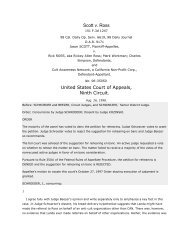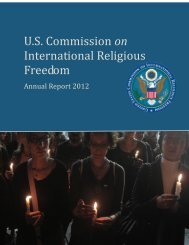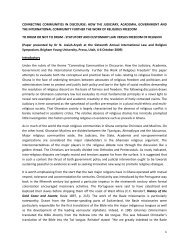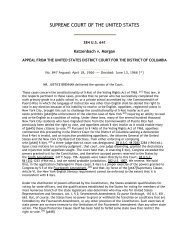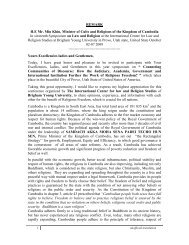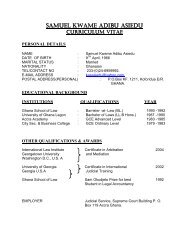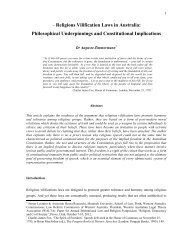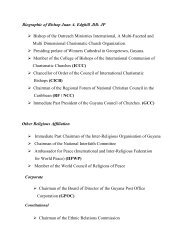Ruling (.pdf) - International Center for Law and Religion Studies
Ruling (.pdf) - International Center for Law and Religion Studies
Ruling (.pdf) - International Center for Law and Religion Studies
Create successful ePaper yourself
Turn your PDF publications into a flip-book with our unique Google optimized e-Paper software.
57. The first step in assessing whether the employer hassuccessfully established a BFOR defence is to identify thegeneral purpose of the impugned st<strong>and</strong>ard <strong>and</strong> determinewhether it is rationally connected to the per<strong>for</strong>mance of the job.The initial task is to determine what the impugned st<strong>and</strong>ard isgenerally designed to achieve. The ability to work safely <strong>and</strong>efficiently is the purpose most often mentioned in the cases butthere may well be other reasons <strong>for</strong> imposing particularst<strong>and</strong>ards in the workplace (….)59. The focus at the first step is not on the validity of theparticular st<strong>and</strong>ard that is at issue, but rather on the validity ofits more general purpose. This inquiry is necessarily moregeneral than determining whether there is a rational connectionbetween the per<strong>for</strong>mance of the job <strong>and</strong> the particular st<strong>and</strong>ardthat has been selected, as may have been the case on theconventional approach. The distinction is important. If there isno rational relationship between the general purpose of thest<strong>and</strong>ard <strong>and</strong> the tasks properly required of the employee, thenthere is of course no need to continue to assess the legitimacyof the particular st<strong>and</strong>ard itself. Without a legitimate generalpurpose underlying it, the st<strong>and</strong>ard cannot be a BFOR. In myview, it is helpful to keep the two levels of inquiry distinct.(emphasis added)2008 HRTO 22 (CanLII)[176] The above quoted passages demonstrate that the objective element of the bonafide <strong>and</strong> reasonable test consistently used in special employment cases is morestringent, requires greater scrutiny, <strong>and</strong> involves a more detailed analysis than the firststep of the unified approach proposed in Meiorin. Not only must the qualification berationally connected to the nature of employment in a general sense, but it must beobjectively “appropriate” <strong>and</strong> “reasonably necessary” to the per<strong>for</strong>mance of the job.[177] In every case in which a court or tribunal has considered a special employmentprovision, <strong>and</strong> was called upon to consider whether a qualification was “bona fide <strong>and</strong>reasonable”, it has had reference to the two part test articulated in Etobicoke. In myview there is no basis <strong>for</strong> adopting a less stringent objective test.[178] Further, the interpretation of the words “nature of the employment” suggestedby Christian Horizons is inconsistent with the jurisprudence. Again, in each specialemployment case, the inquiry was whether the qualification was reasonably necessary52



